Abstract
Spores heated in water at 54 C for up to 1 hr were plated on nutrient agar immediately or held for 3 days in aerated water at 23 C and then plated. Under these conditions, holding was optimal for recovery, increasing survival percentage up to 20-fold over values for immediate plating. Recovery was prevented partially or completely, however, when spores were held in any of the following solutions: glucose, potassium phosphate, ammonium or sodium acetate, sodium azide, or 2,4-dinitrophenol, or in the sodium or potassium salts of pyruvate, and tricarboxylic acid cycle acids. Both anaerobiosis and incubation at 0 C prevented recovery. Survivors of a heat treatment were more sensitive to gamma radiation than were unheated spores. Conditions which affected the recovery of viability had the same effect on restoration of radiation resistance. Thus, many of the processes for restoration of radiation resistance seem involved also in recovery of viability after heating. After a 99% inactivating treatment (about 30 min at 54 C), heated spores respired as fast as unheated spores, or faster. Malate, citrate, succinate, and acetate stimulated respiration in unheated spores and inhibited it in heated spores.
Full text
PDF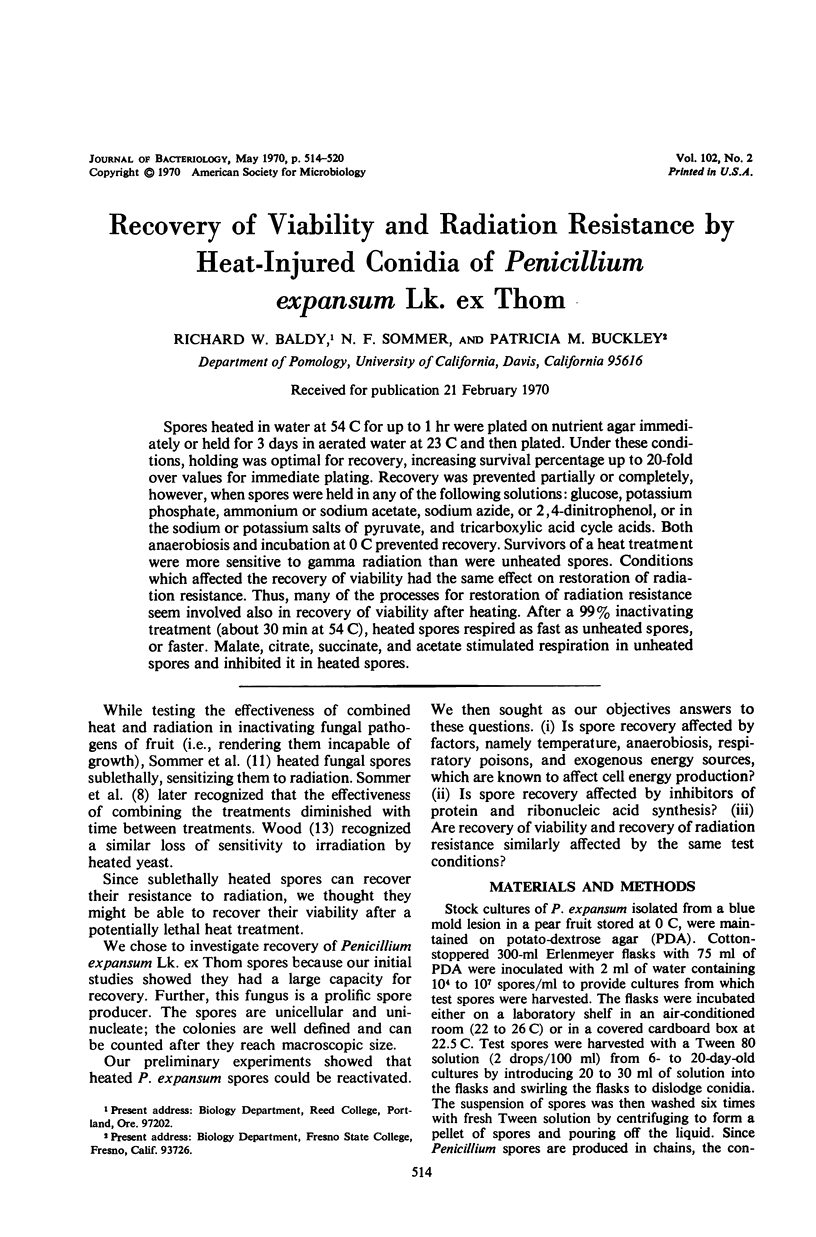
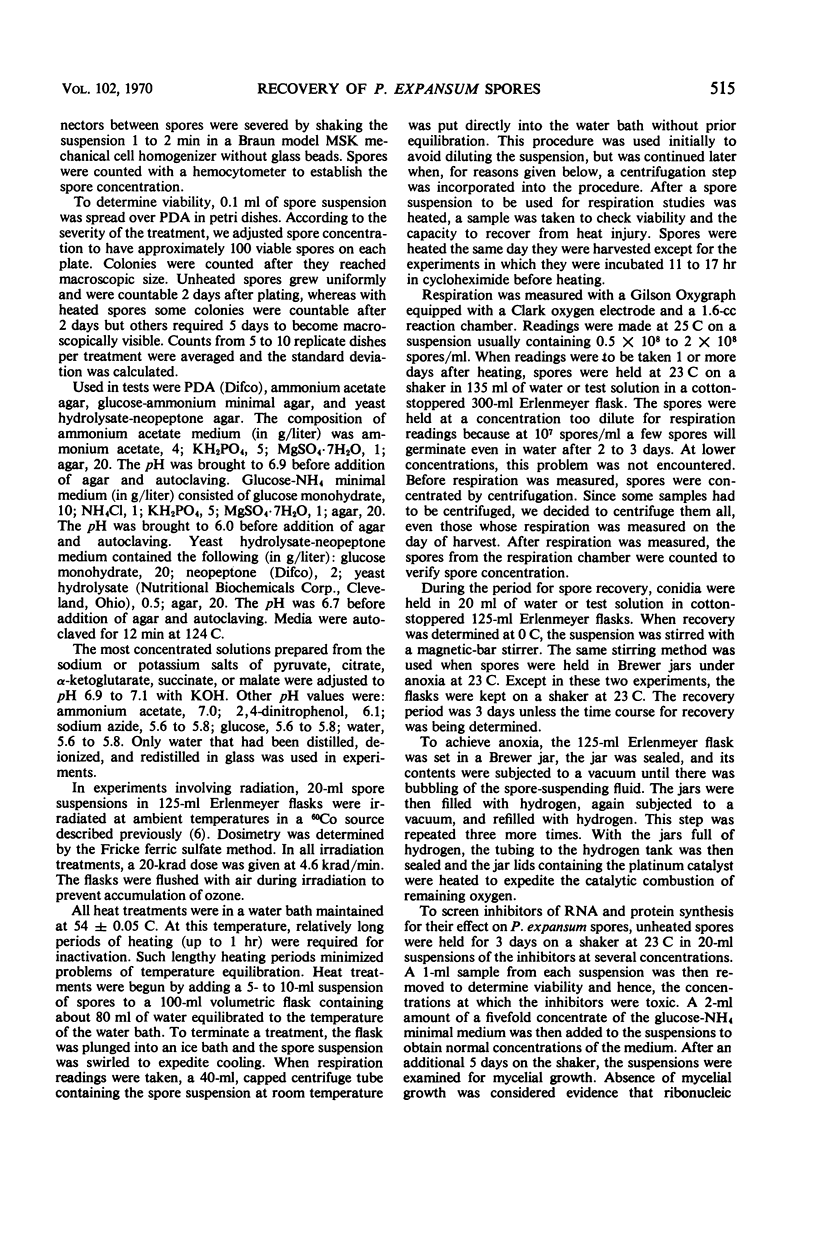
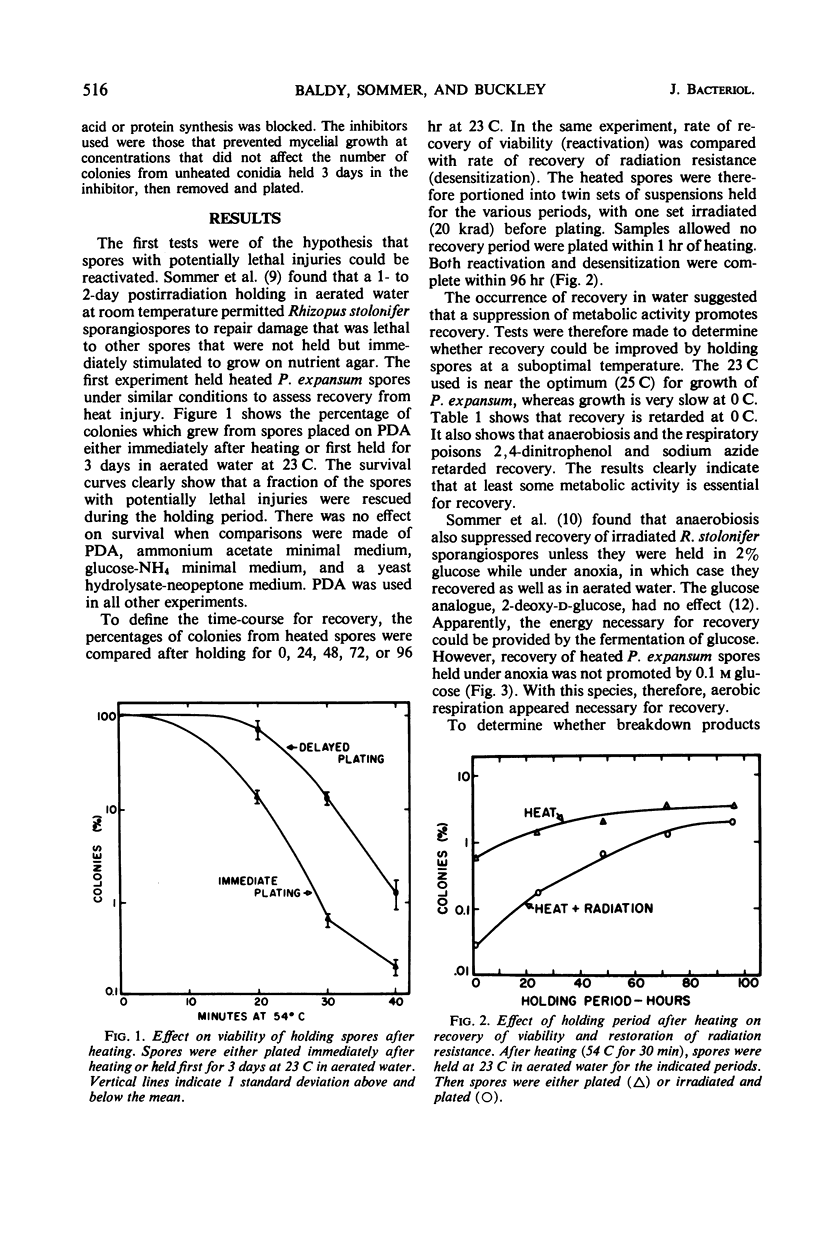
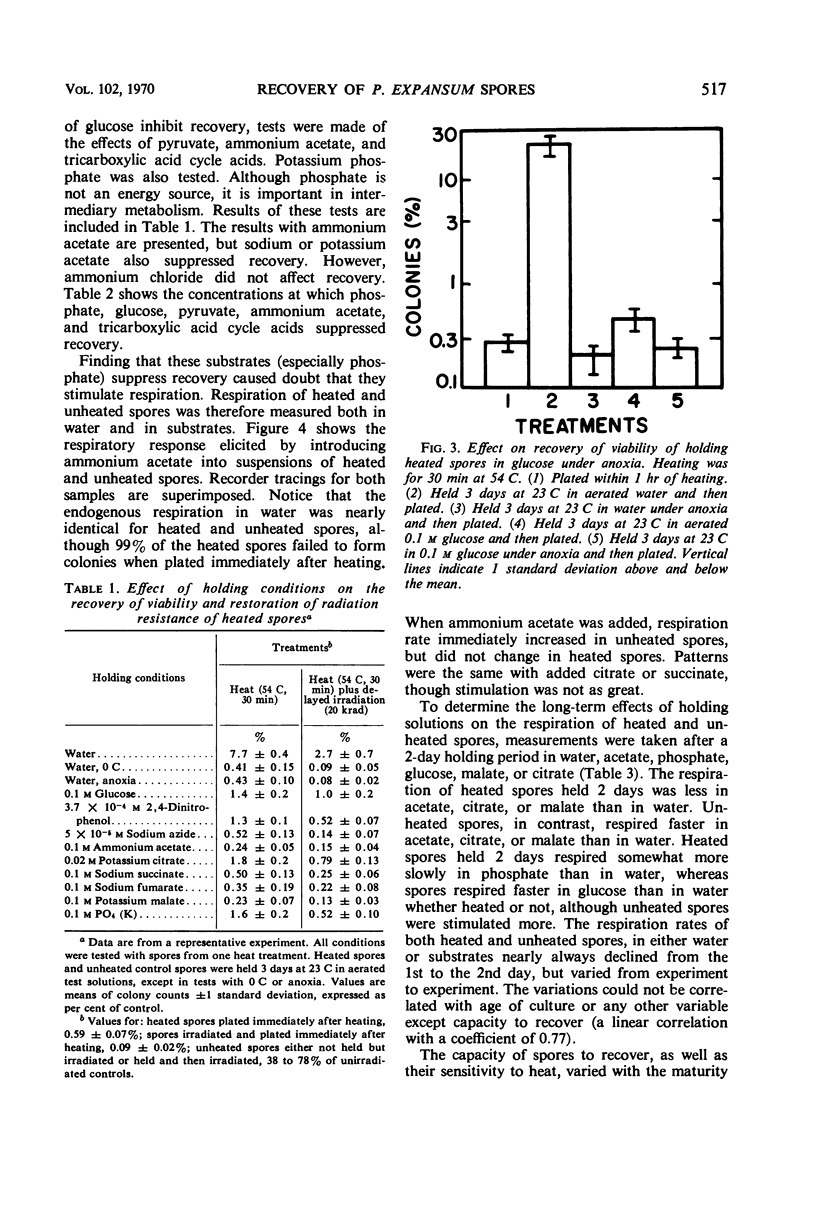
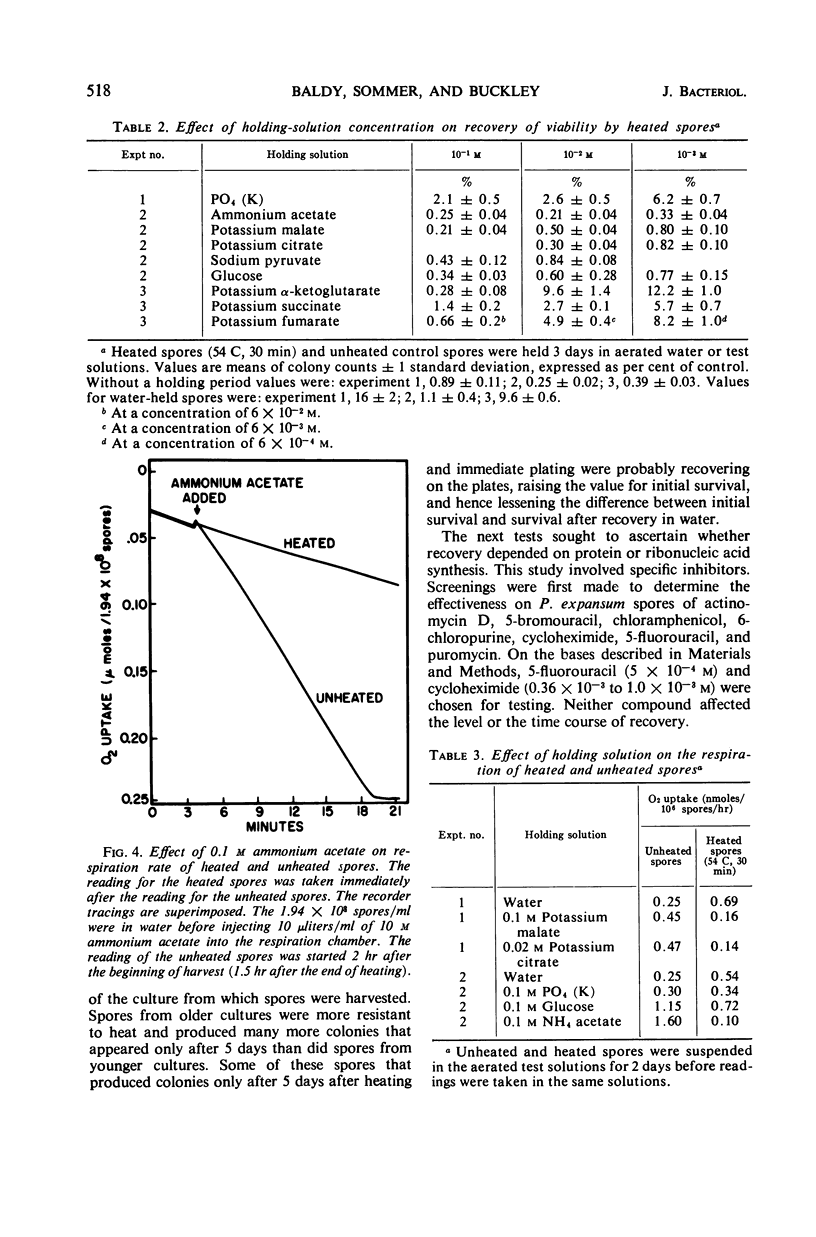
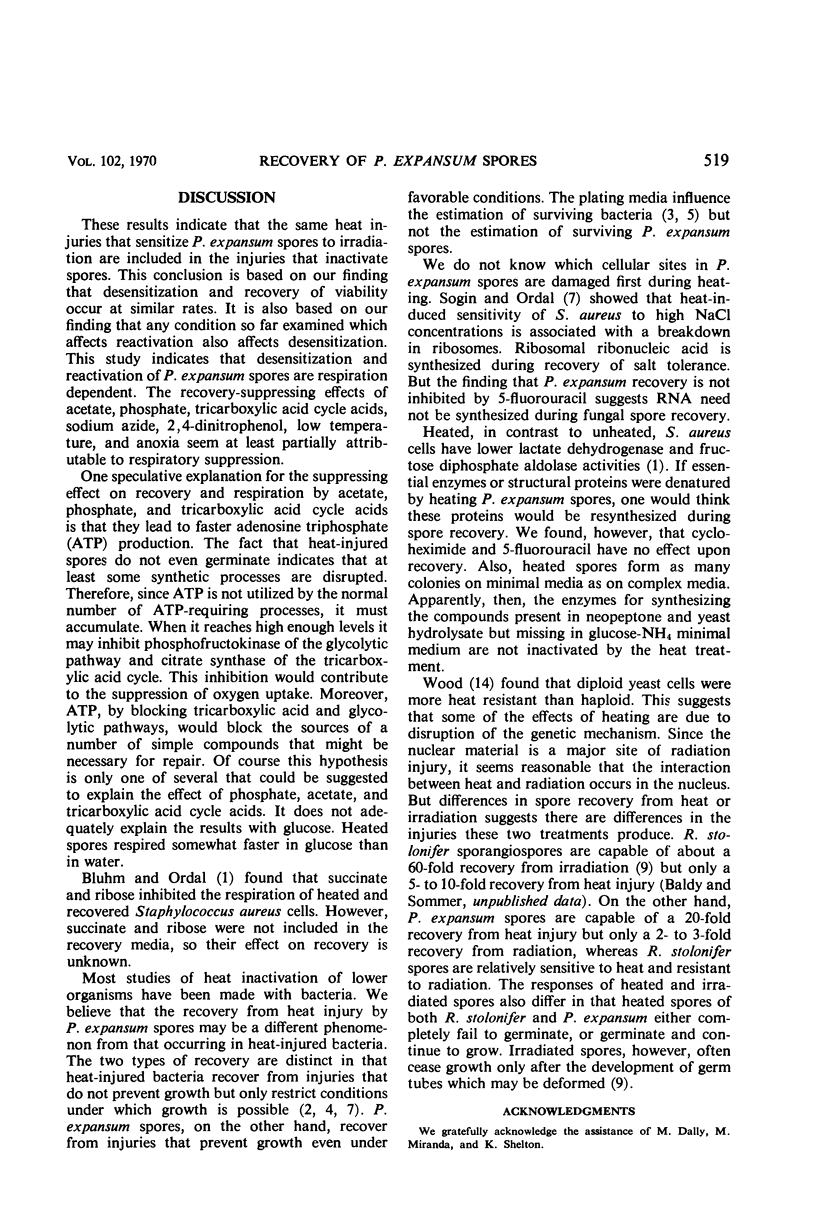
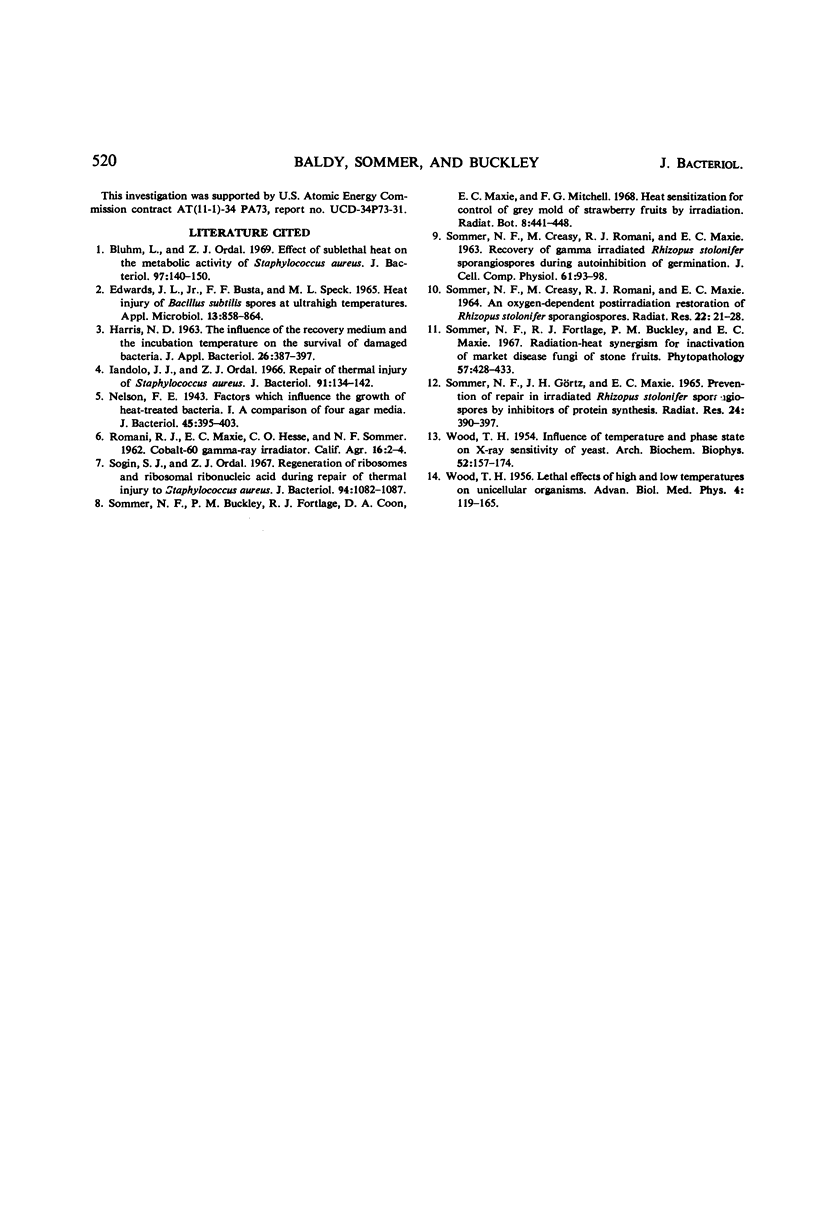
Selected References
These references are in PubMed. This may not be the complete list of references from this article.
- Bluhm L., Ordal Z. J. Effect of sublethal heat on the metabolic activity of Staphylococcus aureus. J Bacteriol. 1969 Jan;97(1):140–150. doi: 10.1128/jb.97.1.140-150.1969. [DOI] [PMC free article] [PubMed] [Google Scholar]
- Edwards J. L., Jr, Busta F. F., Speck M. L. Heat injury of Bacillus subtilis spores at ultrahigh temperatures. Appl Microbiol. 1965 Nov;13(6):858–864. doi: 10.1128/am.13.6.858-864.1965. [DOI] [PMC free article] [PubMed] [Google Scholar]
- Iandolo J. J., Ordal Z. J. Repair of thermal injury of Staphylococcus aureus. J Bacteriol. 1966 Jan;91(1):134–142. doi: 10.1128/jb.91.1.134-142.1966. [DOI] [PMC free article] [PubMed] [Google Scholar]
- Nelson F. E. Factors which Influence the Growth of Heat-treated Bacteria: I. A Comparison of Four Agar Media. J Bacteriol. 1943 Apr;45(4):395–403. doi: 10.1128/jb.45.4.395-403.1943. [DOI] [PMC free article] [PubMed] [Google Scholar]
- SOMMER N. F., CREASY M., ROMANI R. J., MAXIE E. C. AN OXYGEN-DEPENDENT POSTIRRADIATION RESTORATION OF RHIZOPUS STOLONIFER SPORANGIOSPORES. Radiat Res. 1964 May;22:21–28. [PubMed] [Google Scholar]
- SOMMER N. F., CREASY M., ROMANI R. J., MAXIE E. C. Recovery of gamma irradiated Rhizopus stolonifer sporangiospores during autoinhibition of germination. J Cell Comp Physiol. 1963 Feb;61:93–98. doi: 10.1002/jcp.1030610110. [DOI] [PubMed] [Google Scholar]
- Sogin S. J., Ordal Z. J. Regeneration of ribosomes and ribosomal ribonucleic acid during repair of thermal injury to Staphylococcus. J Bacteriol. 1967 Oct;94(4):1082–1087. doi: 10.1128/jb.94.4.1082-1087.1967. [DOI] [PMC free article] [PubMed] [Google Scholar]
- WOOD T. H. Influence of temperature and phase state on x-ray sensitivity yeast. Arch Biochem Biophys. 1954 Sep;52(1):157–174. doi: 10.1016/0003-9861(54)90098-3. [DOI] [PubMed] [Google Scholar]
- WOOD T. H. Lethal effects of high and low temperatures on unicellular organisms. Adv Biol Med Phys. 1956;4:119–165. doi: 10.1016/b978-1-4832-3110-5.50008-x. [DOI] [PubMed] [Google Scholar]


